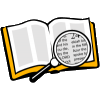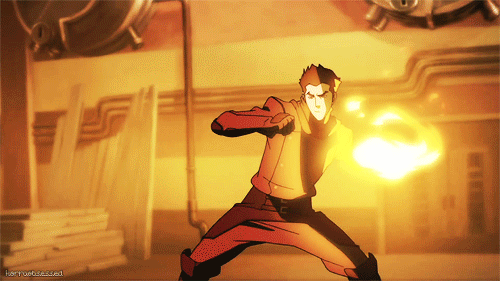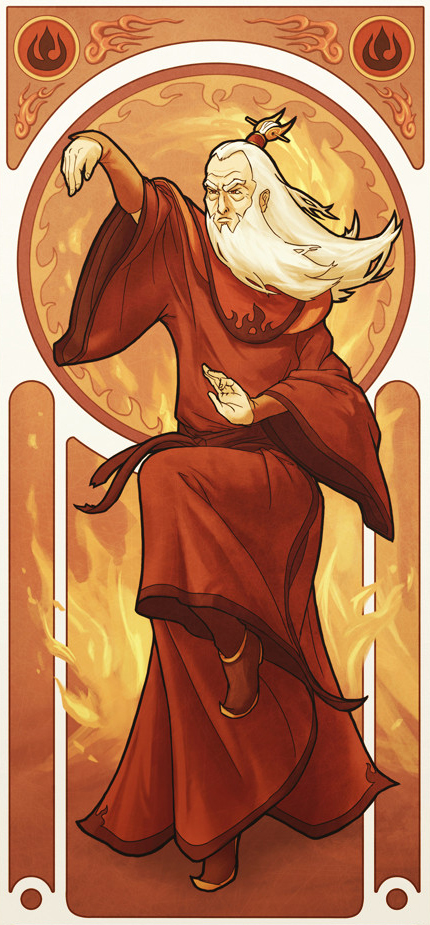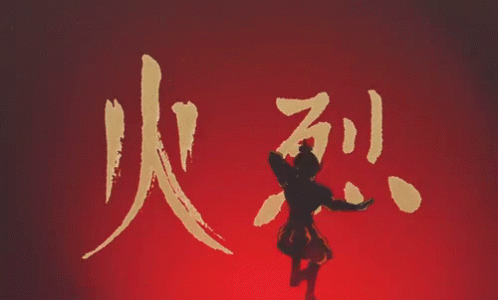Fire Bender (5e Class)
Fire Bender[edit]
A Half-Orc sends out a mighty roar, releasing red-hot flame from his mouth. His opponents step back in fear, realizing the mistake of challenging such a powerful foe.
As she walks through the fire of her initial attack, completely unaffected by the licking flames, the human draws her scimitars, steam pouring off of them as she heats her blades.
After taking a deep breath, a gnome slowly moves his hands in a circular fashion, as lightning begins forming. He quickly points one hand forward, as the lightning lashes out, directly into the oncoming enemy.
Fire Benders have the innate ability to generate and manipulate fire at will. Most Fire Benders have rather extreme or passionate personalities, much like how a flame can never be lukewarm. Though some are aggressive and domineering, many are known to be quite peaceful.
Energy[edit]
Fire Benders draw upon energy for their bending. This means multiple things. To bend, a Fire Bender must have breath in their lungs. The breath becomes energy in the body, extends past the bender’s limbs and becomes fire. They also must have a drive or goal of some sort for their Fire Bending to have any sort of power. Fire Bending forms tend to look like normal martial arts, with many kicks and punches.
Raising and Training[edit]
The original Fire Benders were the dragons. The early human Fire Benders learned their techniques from them, and honed them to what they are today.
Most Fire Benders are born and raised in the Fire Nation. The children go to school and are taught the basics of Fire Bending there. Only those who go into the military learn more advanced and powerful techniques, unless they teach themselves or seek out a Fire Bending master not in the military.
The Fire Nation is considered to have the greatest metalwork in the world, so many people from other nations come to do trade. It’s not unusual for some Fire Nation citizens to become interested in other cultures because of the country’s popularity.
The Fire Nation is the most militarized of all of the nations. They once sought to unite the world under the Fire Nation with their powerful military, but were stopped by the Avatar.
For a member of the Fire Nation to leave their homeland, they would need an extreme desire that could not be fulfilled if they stayed. Perhaps there was an enemy that they needed to defeat, but they had to go on a training journey to become strong enough, or they’ve heard stories of amazing adventures that others have gone on, and they want to do the same.
Creating a Fire Bender[edit]
As you make your Fire Bender, think about their life in the Fire Nation. Was their childhood normal, or were they bullied or abused? When they grew up, did they go into the military, or did they advance their Fire Bending on their own?
Consider why you left the Fire Nation. Do you have a mission that you must accomplish? Were you cast out for misconduct? Did you go out into the world to find that drive you need?
Most Fire Benders lean towards extreme alignments, whether that be Lawful Evil, Chaotic Good, or vice versa.
- Quick Build
You can make an Fire Bender quickly by following these suggestions. First, Charisma should be your highest ability score, followed by Dexterity. Second, choose the soldier background.
Class Features
As a Fire Bender you gain the following class features.
- Hit Points
Hit Dice: 1d8 per Fire Bender level
Hit Points at 1st Level: 8 + Constitution modifier
Hit Points at Higher Levels: 1d8 (or 5) + Constitution modifier per Fire Bender level after 1st
- Proficiencies
Armor: Light and Medium
Weapons: Simple, Martial weapons
Tools: None
Saving Throws: Dexterity, Charisma
Skills: Choose three from Acrobatics, Athletics, Intimidation, Investigation, Performance, Persuasion and Survival.
- Equipment
You start with the following equipment, in addition to the equipment granted by your background:
- (a) Explorer’s Pack, or (b) Dungeoneer's Pack
- (a) a scimitar and a simple weapon, or (b) two scimitars
- A hunting trap and 2 sacks of black powder (gun powder, basically)
| Level | Proficiency Bonus |
Extra Heat | Chi Points | Inner Flame | Basic/Advanced | Tehnique Level | Features |
|---|---|---|---|---|---|---|---|
| 1st | +2 | 1d4 | - | - | - | - | Powerful Defense, Elemental Arts |
| 2nd | +2 | 1d4 | 2 | 1d4 | - | - | Chi, Inner Flame |
| 3rd | +2 | 1d4 | 3 | 1d4 | 1/2 | 2 | Fire Block, Fire Bending Techniques |
| 4th | +2 | 1d4 | 4 | 1d4 | 1/2 | 2 | Ability Score Improvement, Firebender Training |
| 5th | +3 | 1d6 | 5 | 1d4 | 1/3 | 3 | Extra Attack, Intense Release |
| 6th | +3 | 1d6 | 6 | 1d6 | 1/3 | 3 | Flaming Fist, Fire Affinity |
| 7th | +3 | 1d6 | 7 | 1d6 | 1/3 | 4 | Evasion |
| 8th | +3 | 1d6 | 8 | 1d6 | 1/4 | 4 | Ability Score Improvement |
| 9th | +4 | 1d6 | 9 | 1d8 | 1/4 | 5 | Heated Passion |
| 10th | +4 | 1d8 | 10 | 1d8 | 1/4 | 5 | Electric Redirection |
| 11th | +4 | 1d8 | 11 | 1d8 | 2/4 | 6 | — |
| 12th | +4 | 1d8 | 12 | 1d8 | 2/5 | 6 | Ability Score Improvement |
| 13th | +5 | 1d8 | 13 | 1d10 | 2/5 | 7 | Intense Training |
| 14th | +5 | 1d8 | 14 | 1d10 | 2/5 | 7 | Elemental Weapon |
| 15th | +5 | 1d10 | 15 | 1d10 | 2/6 | 8 | Hot Bod |
| 16th | +5 | 1d10 | 16 | 1d10 | 2/6 | 8 | Ability Score Improvement |
| 17th | +6 | 1d10 | 17 | 1d12 | 2/6 | 9 | — |
| 18th | +6 | 1d10 | 18 | 1d12 | 2/7 | 9 | Lightning Bending |
| 19th | +6 | 1d10 | 19 | 1d12 | 2/7 | 9 | Ability Score Improvement |
| 20th | +6 | 1d12 | 20 | 1d12 + Charisma Modifier | 2/7 | 9 | Final Firebending |
Powerful Defense[edit]
Beginning at 1st level, while you are wearing no armor and not wielding a shield, your AC equals 10 + your Dexterity modifier + your Charisma modifier.
Elemental Arts[edit]
At 1st level, your practice of bending arts has earned you some special abilities.
You can use Dexterity instead of Strength for attack and damage rolls when making an attack you are proficient in.
When you walk through fire, you are unaffected by the flames. You can use your reaction to allow any creature of your choosing within 10 feet of you to be completely unaffected by the flames as well.additionally You can roll a d6 in place of the normal damage of your unarmed strike
- Extra Heat
Whenever you deal fire damage, you can take a reaction to deal an extra 1d4 points of fire damage to your target. This damage will increase as you level up. Look at the Fire Bender table’s Extra Heat column.
You know the cantrips control flames, and produce flame, but you cannot attack with produce flame until you reach 3rd level.
Chi[edit]
At 2nd level, you can start using more advanced Fire Bending techniques. The amount of energy that you have is measured by your number of chi points. Your Fire Bender level determines the number of points you have, as shown in the Chi Points column of the Fire Bender table.
You can use chi points to fuel various Fire Bending features. You start knowing three such features: Fiery Blows, Heated Grip, and Flash Fire. You learn more Fire Bending features as you level up.
When you spend a chi point, it is unavailable until you finish a short or long rest, at the end of which you draw all of your expended chi back into yourself. You must spend at least 30 minutes of the rest meditating to regain your chi points.
Some of the Fire Bending features require you to make a ranged spell attack to hit your target or your target to make a saving throw to resist the feature’s effect. The bending attack bonus and save DC are calculated as follows:
- Bending Ability
Dexterity and Charisma are your bending abilities for your Fire Bender features and techniques. You must burn with the speed of a wildfire and the passion of a bonfire. You use your Bending Modifier whenever a Fire Bender feature or technique refers to your bending ability. In addition, you use your Dexterity and Charisma modifiers when setting the saving throw DC and attack bonus for a Fire Bender feature or technique that requires you to use them.
- Bending Modifier
- Dexterity modifier divided by 3 (rounded up) + Charisma modifier divided by 3 and multiplied by 2 (rounded up)
- Bending Attack Bonus
- Bending Modifier + Proficiency Bonus
- Save DC
- 8 + Bending Attack Bonus
- Fiery Blows
- Immediately after you take the Attack action on your turn, you can spend 1 chi point to make two melee attacks that deal your Extra Heat fire damage as a bonus action. You are proficient with these attacks.
- Heated Grip
- As a bonus action, spend 1 chi point to heat the weapon you’re holding. This increases the damage dealt by the weapon by 1d6 fire damage for 1 minute. If you ever release the weapon, the effect will end on the weapon at the start of your next turn. As long as you maintain concentration, you can still pick the weapon back up and immediately gain the damage bonus again. If another creature touches or picks up the weapon before the start of your next turn, they take 1d4 fire damage at the moment of touching and at the end their turn if they keep holding the weapon, unless they have fire resistance. This feature can also cause your unarmed strike to deal an extra 1d6 points of fire damage.
- Flash Fire
- When making a melee attack, you can consume 1 chi point to attempt to blind the target once per turn. The target must make a Constitution saving throw against your Bending Save DC. Failure results in blindness until the end of your next turn. The target can attempt to end the effect by making another Constitution saving throw at the end of their turn. This feature can also be done as an action without making an attack. You must be within 5 feet of your target.
Inner Flame[edit]
At 2nd level, you can tap into your passion to regain energy. If your chi point total reaches 0, you can roll your Inner Flame die immediately, which is located in the Inner Flame column of the Fire Bender table, and gain that many chi points. You cannot exceed your maximum number of chi points. This die increases as you level up. You must complete a long rest before using this feature again.
Fire Block[edit]
At 3rd level, any time you are hit by a ranged, fire-based Attack (this will apply most often to spells, but counters mundane fire as well), you can spend a number of ki points equal to the level of the spell (0 points if it is mundane fire or a cantrip) to block the flames as a reaction. Roll a d20 and add your Bending Attack Bonus. If the result is higher than the attack roll, you take no damage. If it is equal or lower, you take half. This ability works for flames that require you to make a saving throw as well (such as the Fireball spell). For that, the process is the same, you just follow this process rather than making the saving throw, and the DC of your roll is the save DC, not the attack roll.
Fire Bending Techniques[edit]
Upon reaching 3rd level, you can have up to 2 Advanced Fire Bending Technqiues of levels 1-2 of your choosing, as well as 1 Basic Fire Bending Technique. As you gain levels in this class, you will be able to learn higher level techniques, as seen in the Technique Level column of the Fire Bender table, as well as have more techniques prepared, as seen in the Basic/Advanced column of the Fire Bender table.
To do a technique, you must use a number of chi points equal to the technique's level. Basic techniques don't cost any chi points to do.
To do techniques at higher levels, you simply expend the chi cost to use it at that level. However, you cannot do techniques at a higher level than you are capable of doing based on the Technique Level column. For example, as a 3rd level Fire Bender, you could increase a 1st level technique to a 3rd level, but you couldn't increase it to 4th level technique.
Additionally, when you gain a level in this class, you can choose one of the Advanced or Basic Fire Bending Techniques you know and replace it with another Advanced or Basic technique from the Fire Bending Technique list, which also must be of a level for which you are capable of.
The only material you need is having air in your lungs. Every technique has the "S" component, and some can have the "V" component instead. The only time a "V" component could be used instead of an "S" component would be if it's reasonable for you to be able to use the technique by releasing the fire from your mouth, like fire bolt or fire bullets. This is up to the DM.
Ability Score Increase[edit]
When you reach 4th level, and again at 8th, 12th, 16th and 19th level, you can increase one ability score of your choice by 2, or you can increase two ability scores of your choice by 1. As normal, you can't increase an ability score above 20 using this feature.
Using the optional feats rule, you can forgo taking this feature to take a feat of your choice instead.
Firebender Training[edit]
As a member of the Fire Nation, you have a scimitar (or a pair of scimitars) that you have trained with since an early age. All children of the Fire Nation are taught to wield scimitars to some level of proficiency. Being a Fire Bender, you have mastered the art of using your scimitar skills in tandem with your Fire Bending. Upon reaching 4th level, when you make an attack with your scimitar(s) or unarmed strike, you can use a bonus action to do a Basic Technique that normally takes 1 action.
Extra Attack[edit]
Beginning at 5th level, you can attack twice, instead of once, whenever you take the Attack action on your turn moreover, you can use one of your Basic Technique in place of one of those attacks when you reach 11th level in this class you can use one of your Advanced Technique in place of one of those attacks.
Intense Release[edit]
Starting at 5th level, if you are restrained in any way, you can cause your body to reach extremely high temperatures to break the bonds as an action. Metal bonds, like handcuffs, may take several minutes or maybe hours to break, up to the DM. This ability can also be used so that if anyone makes physical contact with you, they will take 1d8 points of Fire damage. This buff lasts for 1 hour, or you can cancel it without taking an action. It can instead be used to create an explosion around you as an action. It has a 15 foot radius centered on you, dealing 6d8 damage to all creatures and objects within the radius besides you. You must complete a long rest before using this feature again. The damage die for your unarmed strikes becomes 1d8.
Fire Affinity[edit]
Starting at 6th level, when you use a Technique that deals Fire damage add your Charisma modifier to one damage roll of that Technique.
Flaming Fist[edit]
Starting at 6th level, you can make a simple, offensive Fire Bending attack for close-combat. You ignite your fist your unarmed strike now dealing additional 1d6 fire damage,you can chose to light flammable objects that are not being worn or carried on fire by simply touching them.
Also, when you deal fire damage to a creature, you ignore fire resistance.
Evasion[edit]
At 7th level, your instinctive agility lets you dodge out of the way of certain area effects, such as a blue dragon's lightning breath or a fireball spell. When you are subjected to an effect that allows you to make a Dexterity saving throw to take only half damage, you instead take no damage if you succeed on the saving throw, and only half damage if you fail.
Heated Passion[edit]
Starting at 9th level, you gain Heated Passion. Heated Passion is a feature that allows you to tap into what drives your Fire Bending to increase the amount of damage you deal when dealing fire damage. You have your PROFICIENCY BONUS uses of this feature, which resets every Long Rest. When you use Heated Passion, you increase the damage dice that you use by one size (d4 to d6, d6 to d8, d8 to d10, d10 to d12, and d12 to 1d12 + Charisma Modifier.). You must decide before you roll for damage if you want to use Heated Passion or not. For example, if you used Heated Passion when you used fire bolt, which deals 2d10 fire damage, you would instead deal 2d12 fire damage.
Electric Redirection[edit]
Starting at 10th level, you have mastered the energy inside of yourself enough so that you can redirect lightning-based attacks. If a lightning-based Attack is directed at you, as a reaction and expending 1 chi point, you must first make a Dex saving throw higher than the attack’s accuracy or save DC. A failure results in you getting hit as normal. If you succeed, you must then make a Charisma saving throw to calm yourself and let the energy flow in, through, add your Cha bonus to this roll. If you roll a 10 or lower, you take half of the original damage and are stunned until the beginning of your next turn. If it is 11 to 15, you successfully redirect the attack, but it is redirected in a direction of your choice that is not in the direction the attack came from. If it is 16 or higher, you have complete control over the attack and where it goes. The same rules for the initial lightning-based attack apply to you in relation to range, damage, and number of targets.
Intense Training[edit]
Starting at 13th level, you have trained your combat skills with great intensity, increasing your skills notably. You gain proficiency in Athletics and Intimidation. If you already have proficiency in one or both of these abilities, you gain double proficiency The damage die for your unarmed strikes becomes 1d10.
Also, when you deal fire damage to a creature, you ignore fire Immunities.
Elemental Weapon[edit]
Starting at 14th level, as a bonus action, you can expend 3 chi points to create a scimitar or 5 chi points to create 2 scimitars out of fire. This scimitar(s) has a range of 10 feet. It deals 2d6 fire damage. You can land a critical hit with this weapon(s) by rolling a 19 or a 20. When attacking with this weapon(s), you can expend chi points to either increase accuracy rolls or damage rolls. Increasing accuracy rolls to or above 19 does not cause a critical hit. 1 chi point results in an increase of 1 to the roll. This weapon lasts for 10 minutes. You can cause this weapon to disappear or reappear at will without any action or reaction once you have created it.
Hot Bod[edit]
Starting at 15th level, after honing your Fire Bending skills, you have now gained a natural resistance to all fire and cold damage. You also cannot be frozen by any means.
Lightning Bending[edit]
You have mastered the art of separating energy to create lightning. Starting at 18th level, as an action, make a Charisma saving throw as you attempt to calm yourself for this attack (If you've taken damage since the beginning of the round, you roll with disadvantage). If you roll less than a 10, you take 6d8 points of Fire damage as your attempt to Lightning Bend blows up in your face, literally. If your roll is greater than or equal to 10 and less than 21, you consume 8 chi points and use the technique blasting bolt, dealing only lightning damage. If your roll is 21 or higher, you consume only 5 chi points. If you reduce a creature to less than one third of their total hit points with this technique, they must make a Constitution saving throw against your Bending Save DC, falling unconscious for one minute if they fail.
Final Firebending[edit]
At 20th level, you have become a true master of Fire Bending. You gain the following abilities:
- Controlled Flame
Any time you do an attack that deals fire damage, you can expend either 1 ki point to grant yourself advantage on the attack, or a number of ki points equal to the damage dice minus your proficiency bonus (10d8 fire damage would require 4 ki points if your proficiency bonus was +6) to gain advantage on that damage roll (just like having advantage on an attack roll, you would roll the dice twice, adding the relevant modifiers each time, and then use the higher total).
- Combustion
There’s fire, then there’s lightning. But there is one firebending technique that rises above the rest when it comes to raw power: combustion. Many fire benders can create explosions, but it often takes a lot out of them. But not you. You can now use the technique fireball without consuming any chi points. The fireball technique no longer counts towards the maximum number of Advanced Techniques you know.
Fire Technique List[edit]
Basic Techniques[edit]
Create Bonfire (no concentration, but the fire isn't magical)
Elemental Edge (only fire damage for all elemental spells)
Advanced Techniques[edit]
- 1st Level
None
- 2nd Level
Dragon’s breath (fire and self only)
heat metal (requires contact)
- 3rd Level
- 4th Level
- 5th Level
- 6th Level
- 7th Level
- 8th Level
None
- 9th Level
None.
Custom Techniques[edit]
The player can attempt to think of their own Fire Bending technique if they so choose. It is up to the DM to determine (a) if the Fire Bender is at a high enough level to accomplish this technique and (b) how many ki points it would cost, as well as casting time (action, bonus action, etc.) A suggestion to the DM for making this decisions would be to look at the Fire Spells and abilities the Fire Bender already has at this level and compare them to the technique the player wants to create. If you think the custom technique is stronger than what they are currently capable of, you reject the idea, or cause a nasty side effect to occur if they attempt this technique, if you think it's only a little bit outside of their skill level. You could also force them to roll a check or saving throw of some sort to see if they are successful at doing the technique or not. A custom technique takes up 1 spell on the player's Fire Spell list.
Multiclassing[edit]
Prerequisites. To qualify for multiclassing into the Fire Bending class, you must meet these prerequisites: you cannot be a bender of another element, and you have to have some sort of Fire Bending ancestry, or Harmonic Convergence happens (Explanation of Harmonic Convergence) and you gain Fire Bending.. Talk to your DM to make it work
Back to Main Page → 5e Homebrew → Classes







